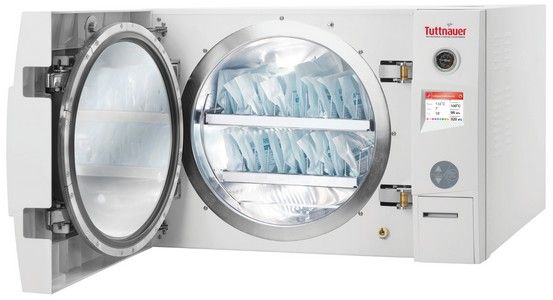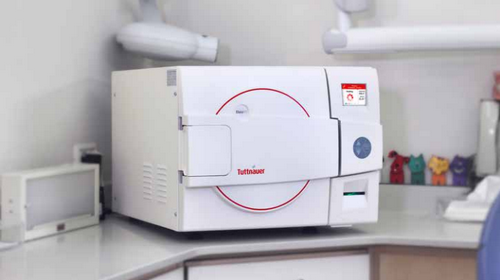We’ve explored the science behind steam and applied it to the autoclave, it’s time to look at specific types of autoclaves to understand how they function, but before we explore this, let’s review.
The goal of sterilization is to have sterile equipment that can be reused. That means that all microorganisms are destroyed, essentially hitting the “reset” button on these devices/media to return them to a sparkly sterile state. Sometimes, however, we have a second goal as well. It may not be enough to sterilize the tools if they will not be used immediately; rather, we also have to consider how to store them properly so they do not become recontaminated. Therefore, the second goal of autoclave sterilization (if the load will not be used immediately) is to isolate the sterilization load from outside germs and deprive the load of any water -- thus ensuring an inhospitable environment for the spread of germs and lowering the chance of recontamination. The way in which we achieve this second goal is to wrap the sterilization load in autoclaveable paper or pouches.

How Does the Class N Autoclave Work?
Let’s take a look now at what actually happens inside the autoclave chamber. After we place the autoclave load inside -- either unwrapped solids, liquids, or hollows -- or small lightly-wrapped packages, we close the door and turn on the autoclave.
- The steam pushes out (displaces) the air (and some of the steam) through the air jet, or by positive pulses by a process called gravity displacement.
- Then we reach the sterilization temperature of 121℃/134℃. This stage is called sterilization time or holding time. It is at this stage that the actual sterilization takes place. The amount of time depends on the contents of the load. Two of the most popular loads are delicate and standard. The autoclave cycle lasts for fifteen minutes at 121℃ for delicates, like plastics, and other delicate items that need a lower temperature. For a standard load, which contains glassware or metal solids, hollows, porous items or textiles, the sterilization time is three minutes at 134℃.
- The next stage is called the exhaust stage, in which we remove the pressure back to atmospheric pressure through the exhaust valve.
- Finally, the last stage is the drying stage. Depending on the autoclave, this may be achieved via aeration pump or by opening the autoclave door.

Classy Conclusion
We explained the two goals of autoclave sterilization: 1. Ridding microbial life (germs) from the load and 2. Ensuring that said load stays sterile by wrapping it in a sterilization pack or pouch. We discussed that Class N can be used for unwrapped loads, for instruments that will be used right away, or small lightly packed pouches that will be stored for later use. We then took a look at what happens inside the autoclave when we turn it on. In a nutshell, steam builds up in the chamber, and air is removed. Next comes sterilization time, then the exhaust phase, and finally drying.
Thanks for coming along for the ride in Tuttnauer autoclave land. Next stop: Class B tabletop autoclaves!
Comments and questions are welcome, as always, in the comment section below.
